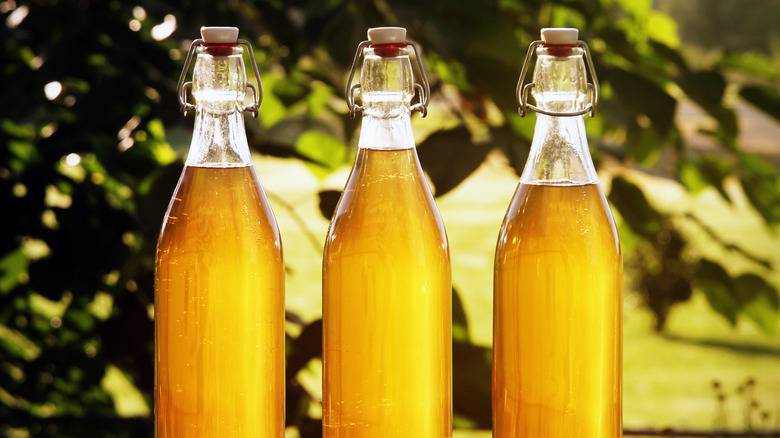How Is Mead Different From Wine?
We may receive a commission on purchases made from links.
Although the core ingredient differs, mead and wine frequently get intermixed. While wine is produced from grapes harvested from vineyards, mead is made from a base of honey. On top of that, their alcohol content can vastly vary. Whereas most wine averages out at 11 to 13% ABV, mead tends to be in the range of 6 to 20%, depending on the fermentation process. Wine varieties are named according to the kinds of grapes used in production. In contrast, mead is typically just labeled as mead and categorized as sweet, dry, or somewhere in between.
Despite these key differences, wine and mead also share a few similarities. Their fermentation process is similar, although wine requires more steps including grape harvesting. Mead is even sometimes called honey wine because it partakes in this similar fermentation process. The pair have been around for centuries, with mead believed to be the oldest alcoholic drink in the world, dating back to approximately 6,500 B.C. in Asia and around 2,500 B.C. in Europe. Like wine, mead can be served hot, at room temperature, or cold, depending on the type and the drinker's preference. (By the way, if it's cold drinks you're after, this water hack will quickly chill your wine.)
Wine and mead also benefit from aging, both needing a duration of at least six months. The two also offer a variety of tasting notes, with many of their most common flavors overlapping including essences stemming from florals, spices, and fruits.
More people are growing interested in mead
Despite being invented thousands of years ago, mead is experiencing a recent upswing in trendiness, with many patrons taking their first sips of this honey elixir at Christmas markets and Renaissance festivals. If there aren't any winter markets or medieval fairs happening near you, you can also check your local liquor or grocery store, though you may find that the mead selection is smaller than the number of wines available. If you're feeling adventurous, purchase a mead making kit from Craft a Brew and try your hand at being a mead maker.
Yet, just because mead is growing in demand doesn't mean it fits into every recent alcohol trend. For instance, alcohol-free mead is not hugely commercial yet; however non-alcoholic wine is being made since the industry is currently booming with more customers becoming health-conscious and limiting their alcohol intake. And unlike wine, sulfite-free mead hasn't become popular yet either (although, truth be told, fully sulfite-free wine is also a myth). Perhaps mead cocktails will be the next fad in much the same way that wine spritzers have gained favorability. Only time will tell.

